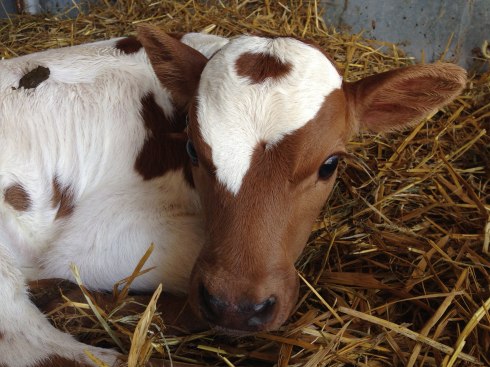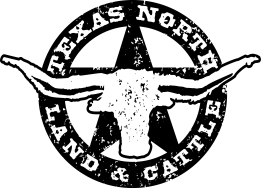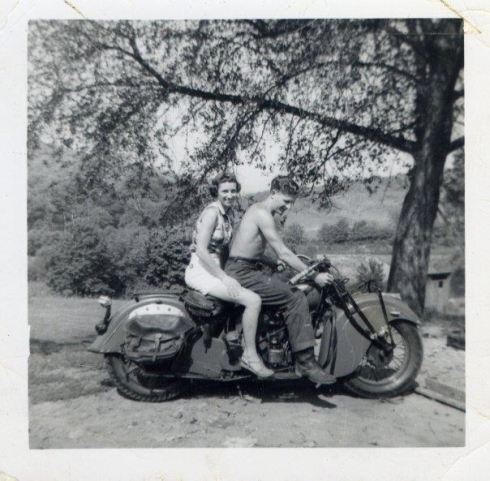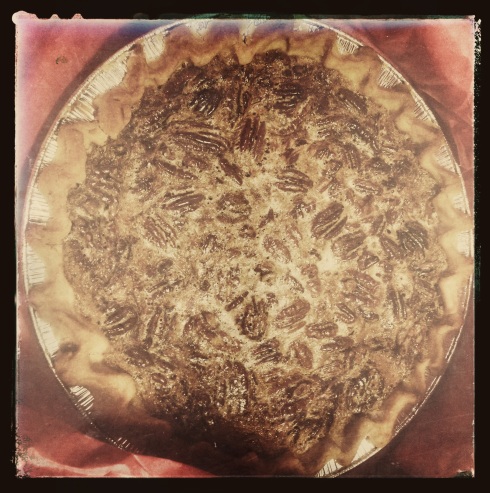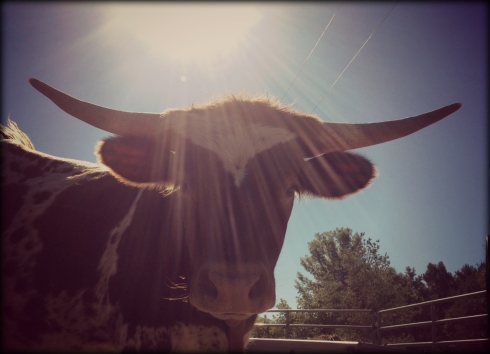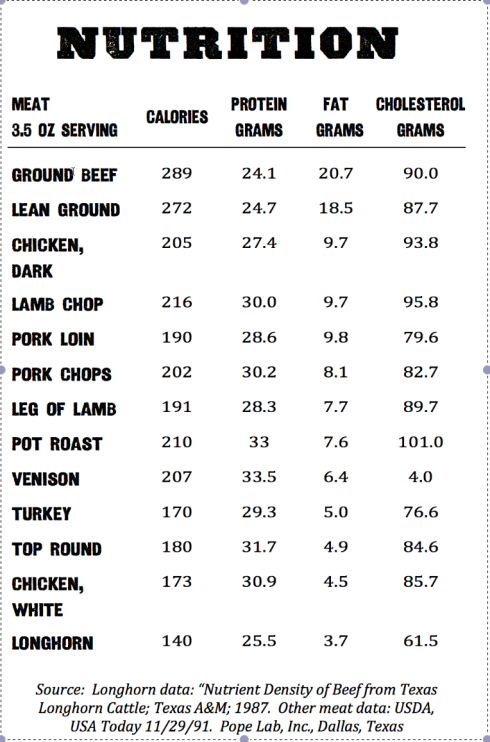Forgive my unexpected absence last Thursday, Folks. I was ambushed by a plague so mean and nasty I didn’t know what day it was until Saturday. I can stand on my own two feet today, but I am not steady… so watch out. I wanted to give you a poetic tale and testament of the Old West, where the longhorn came from, and how the breed survived extinction by the efforts of seven families, but I will keep it simple today. We’ll just cover the branding process, nice and neat.
•
Branding, like we talked about on the 25th, is simply expressing your message visually. It’s creating a symbol or a look that represents you consistently wherever it’s seen. In today’s world, that’s all about sales and websites and stats.
In the Mulder household, branding actually has more to do with cattle than with writing… but still everything to do with ownership, vision, and consistency. Branding animals is proof of genetics, ownerships, and breeding. Before there were fences, there were brands. Each year, we brand our calves to have give that animal a permanent, traceable record of birth and ownership. Genetics for longhorns are handled like genetics of any other registered animal. The ancestry of the animal can be traced back along lines, which allows buyers to search for specific offspring from specific animals in the hopes of adding those traits to their own program.
So, each registered breeder has a brand. Ours looks like this:

(on paper)

(burned into leather)

(backwards, on the iron)
You can see that on the actual brand, the arrow is quite rounded. Anywhere there is a pointed or sharp intersection is especially dangerous for the animal. The tip gets SUPER hot and could press sharply in, so we tried to minimize that as much as possible. But that’s our brand: TX for Texas and then the NORTH is the arrow pointing up from the X as if from Texas to Michigan.

Each animal is also given a number. Each breeder you meet will have a different numbering system that makes sense in their books. Some simply number the calves as they come through the chute. Our herd is small enough that we like to number them according to birth order. So, looking at Jitterbug here: she’s got her TXN brand and the number 513. This tells anyone that she was bred at TexasNorth and it tells us that she was the 5th calf of 2013. See? In a couple years, this will make it easy to tell at a glance how old she is.

The branding process itself takes about 1 minute per animal. They are branded young, when they are fast healers and easier to handle. They simply walk into a squeeze chute that hold them tight and then rocks back so the animal is on its side, which helps keep it calm. The branding iron is just a large version of your own curling iron. There are still old-fashioned, non-electric versions that you heat up in a fire, but this way is more consistent and safer for the cowboy and the animal: no constant re-heating, no uneven heat distribution, etc. The numbers are all on an iron, too- 3 irons, actually: 1, 2, 3 on one and then 4, 5, 6 on another and 7, 8, 0 on the last one. The number 9 is made by using the 6 upside down. Fancy, right?

Once the calf is on its side, Curt pressed the TXN iron on first (which smokes because of the hair) and then alternates irons to get the right number on the animal. It helps to have a beautiful ranch manager nearby yelling out what number goes on which calf. Sometimes that sassy manager also holds the calf’s heads and tells them stories while the boys do their work. Sometimes she takes the kids for a walk when they get bored. Sometimes, they go get pizza. It depends. It’s not all boots and glory, I’ll tell ya that.


After the numbers are on, the chute is righted and the calf is released. It’s a quick, albeit uncomfortable (but not loud… our girls didn’t make a sound) process. The tattoo will scab after a week or two, but the girls are more stressed out by the whole traveling bit than the branding bit, and I’ve see grown men whine about their own tattoos more than these girls ever make noise about theirs. But, they do have some incredibly thick skin.
We own our own branding iron, but we don’t have the number irons OR the fancy flip chute, so each year we load up our girls and we head over to a friend’s ranch for a “branding party.” Several folks usually show up with their calves, which makes the work easier to manage and absolutely a good time.
Now, if there’s an buyer interested in Jitterbug, we could say, “Oh yes. She’s got fabulous potential. Lots of winners in her family lines.” The buyer could take us at our word, but before laying down serious cash would probably like some proof that she’s the real deal. Her certificate of registration, which follows her wherever she is sold, is stamped by the TLBAA once she’s branded and verifies her family tree.
Bug’s tree looks like this:

The sire, or bull in this case, is always listed on the top of the tree. This is showing us that she’s got Rio Safari, Rio Grande, and Tejas Star in her blood, which is great news for horn growth, since Rio Grande (her granddad) is one of the longest bulls in the breed. It also shows us that she’s a Belinda granddaughter (who we did not breed but do own… you know Belinda… she’s Sugar’s mom), which tells anyone that it’s likely Jitterbug is going to be a good milk-producer, an easy calver, and and all-around good mamma to her babies. Just what you want in a girl. We know all of this because every cow in that tree has a stamped registration card verifying their breeding lines.
So that brand? That brand is symbol of our word and our program. It makes identification easy when the calf grows into a full cow and blends in more with the older herd. At the very least, it continues a visible tradition that goes back to the Egyptians.
Thant, my friends, is a little bit about the other kind of branding.
Thanks for hanging in there.


